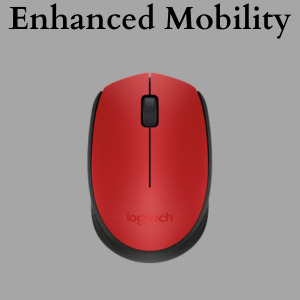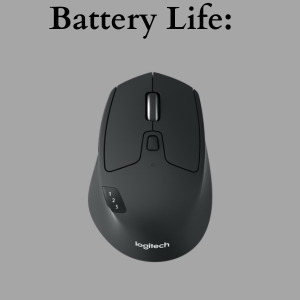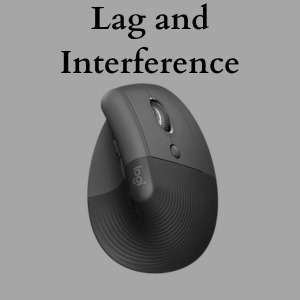#wireless networking technologies
Explore tagged Tumblr posts
Text
iPhone 16 ที่มาพร้อม Wi-Fi 7 อีกหนึ่งปัจจัยการอัพเกรดระบบเครือข่ายไร้สาย Generation ใหม่
ช่วงนี้ใคร ๆ ก็พูดถึง iPhone 16 หลังจากเริ่มส่งมอบให้ผู้ที่จองเป็นกลุ่มแรก ๆ บทความรีวิวมีมากมาย แต่ในฐานะที่ผมทำงานด้านเครือข่าย ขอพูดถึง Wi-Fi 7 ที่มาพร้อมกับ iPhone 16 ว่ามันดีอย่างไร ใช้ได้ตอนไหน ซึ่งจะเพิ่มความเร็วและประสิทธิภาพอย่างก้าวกระโดด
วันสองวันนี้ใครๆก็พูดถึง iPhone 16 กัน หลังจากทาง Apple เปิดตัวสินค้าใหม่ในวันที่ 10 กันยายนที่ผ่านมา และเริ่มทำการส่งมอบถึงมือผู้จับจองเป็นกลุ่มแรกๆของประเทศไทย เมื่อวันที่ 20 กันยายน โดยนาทีนี้บทความรีวิวเกี่ยวกับเครื่อง สเปค กล้อง หรือประสบการณ์ใช้งานอาจจะออกมามากมายหลายแหล่ง แต่ในฐานะที่ผมทำงานเกี่ยวข้องกับการพัฒนาตลาดสินค้าระบบการเชื่อมต่อเครือข่าย Network จะขอพูดถึงการมาพร้อมกับเทคโนโลยี…
#HighSpeedInternet#iphone 16#Networking#news update#Technology#WiFi#wifi 7#WiFiStandards#Wireless#WirelessNetwork
3 notes
·
View notes
Text
Exploring the Latest Innovations in Electric Vehicle Charging
The adoption of electric vehicles (EVs) is on the rise globally, and as a result, the demand for efficient and accessible EV charging infrastructure has increased dramatically. To meet this growing need, innovators and industries are constantly pushing the boundaries of technology and developing cutting-edge solutions to address the challenges associated with EV charging. In this blog post, we…

View On WordPress
#Bidirectional Charging#Dynamic Charging#Electric Mobility Innovations#Electric Vehicles (EV)#EV Charging Technology#Future of Transportation#Green Technology#IONITY Network#Renewable Energy Integration#sustainable transportation#Tesla Supercharger#Ultra-Fast Charging Stations#Vehicle-to-Grid (V2G)#Wireless EV Charging
2 notes
·
View notes
Text
What are the Different Security Protocols?
#General#Technology#Security Protocols#WEP#WiFi#WiFi Networks#Wireless Security Protocols#WPA#WPA2#WPA3
2 notes
·
View notes
Photo

More cells are being added to the cell tower next to where I live. Every fucking time they add more it gets worse for me. As if my life hasn't become restricted enough already from this shit. Maybe I'll get lucky this time and instead of almost killing me when they turn it on it'll actually kill me this time. At least I won't have to wake up here in this Hell anymore. https://medcraveonline.com/JABB/JABB-04-00096#:~:text=Some%20people%20who%20are%20electrically,contribute%20to%20even%20more%20anxiety
7 notes
·
View notes
Text
Jorge Urrutia Galicia: A Mexican Pioneering Mathematician And Computer Scientist

Jorge Urrutia Galicia is a Mexican computer scientist and mathematician.
Galicia is best known for his work on geometry. He made contributions to many different areas of mathematics, including discrete geometry, discrete optimization, and computational geometry. His specialty in computational geometry has made him recognized as one of the leading researchers worldwide. His research has also focused on combinatorial optimization, which is related to combinatorial game theory.
His early works dealt with problems of separability and visibility, a field in which he is an indisputable authority. While it is clear that mathematics has always played a basic role as the underlying foundation of all technology, especially now, and in this case it is confirmed why the technological scope of Dr. Urrutia’s articles in routing is significant; suffice to mention just one: recently algorithms are being implemented based on the ideas of Dr. Urrutia, to make communication networks that can be used in case of natural disasters.
Since the end of the 20th century, he began to work on routing problems, developing algorithms for both the combinatorial and geometric problems, which literally founded a work area of great importance in its application to wireless and cellular networks. In the 21st century, Dr. Urrutia has also stood out for his numerous contributions to the study of discrete sets of points, on which he has made decisive contributions, both in their solution and formulating various variants.
Dr. Jorge Urrutia Galicia studied a bachelor’s degree in mathematics at the Faculty of Sciences of UNAM from 1971 to 1974, and a master’s and doctoral degree in mathematics at the University of Waterloo, Canada from 1976 to 1980. He has worked at the Metropolitan Autonomous University-Iztapalapa, CIMAT, Carleton University, Ottawa University from 1984-1998, where he was "full professor", and since 1998 at the Institute of Mathematics of the UNAM. On average, he teaches five courses each year (two undergraduate and three postgraduate courses).
Annually, he organizes at least two research workshops in Mexico, one of its main objectives being that its students know and work with renowned researchers and learn to collaborate with them as equals.
From 1990 to 2000, he was editor-in-chief of the journal Computational Geometry, Theory and Applications, published by Elsevier Science Publishers. He has been a member of the editorial boards of the Mexican Mathematical Society Bulletin and of Graphs and Combinatorics (Springer, and Computational Geometry: Theory and Applications (Elsevier). He was also editor of the Handbook of Computational Geometry (2000), one of Elsevier's first published handbooks.
He has published more than 270 articles in conference proceedings and research journals in mathematics and computing, which have received more than 6,000 citations, among the most important are two articles on routing in ad-hoc and wireless networks, which have received more than 2 600 citations together: “Compass Routing in Geometric Graphs” and “Routing with Guaranteed Delivery in Ad Hoc Wireless Networks.” In these investigations, Dr. Urrutia develops new strategies – highly efficient – to send information on wireless networks that take advantage of the characteristics obtained by recent technologies such as GPS, in addition to allowing them to travel through these networks effectively without having knowledge of their topology. It is worth mentioning that in 2012 he was the most cited mathematician of the UNAM.
He has given more than 40 plenary lectures at international congresses on Computational Geometry. He was editor-in-chief of "Computational Geometry, Theory and Applications" from 1990 to 2000. He has supervised more than 55 bachelor, master and doctoral theses.
In 2015, he received the "National University in Research in Exact Sciences" award at UNAM. He is is a member of the National System of Investigators, Level 3 He has organized and participated in the organizing committees of several national congresses including the "Victor Neumann-Lara Colloquium on Graphic Theory and its Applications", the "Canadian Conference on Computational Geometry", the "Japan Conference on Discrete and Computational Geometry" and the "Computational Geometry Meetings" (Spain). Oher countries where he has also participated in this way are Italy, Indonesia, Philippines, China, Canada, Peru and Argentina, as well as his home country, Mexico.
Source: (x) (x) (x)
#����🇽#STEM#Jorge Urrutia Galicia#mexico#UNAM#mathematics#geometry#computer science#mexican#latino#hispanic#discrete optimization#combinatorial game theory#natural disaster#technology#wireless network#cellular#Metropolitan Autonomous University-Iztapalapa#CIMAT#Carleton University#Ottawa University#Institute of Mathematics#Elsevier Science Publishers#Mexican Mathematical Society Bulletin#National University in Research in Exact Sciences#canada#europe#spain#japan#italy
4 notes
·
View notes
Text
The Freedom of Wireless Mice: Unleash Your Productivity
In a world where technology continually strives for convenience and efficiency, wireless mice have become indispensable tools for many individuals. Whether you're a professional, a gamer, or simply someone who values a clutter-free workspace, wireless mice offer a liberating experience. In this blog post, we'll explore the benefits, technology, and considerations surrounding wireless mice.
The Advantages of Wireless Mice
No More Tangled Wires: Perhaps the most apparent advantage of wireless mice is their freedom from tangled cables. This means you can say goodbye to the hassle of untangling cords or worrying about tripping over them. A clutter-free desk promotes a more organized and stress-free work environment.

Enhanced Mobility: Wireless mice allow you to work or play from various positions without being tethered to your computer. Whether you're giving a presentation, lounging on the couch, or using your computer for a home theater setup, wireless mice offer the freedom to control your device from a distance.

Reduced Desk Clutter: With no cords to worry about, your workspace will look cleaner and more organized. This can lead to increased productivity and a sense of calm while working or gaming.

Travel-Friendly: Wireless mice are typically smaller and lighter than their wired counterparts, making them easy to carry around in your laptop bag or backpack. This portability is especially convenient for travelers or those who frequently work on the go.

Precision and Performance: Modern wireless mice offer the same level of precision and performance as wired mice. Many wireless models feature advanced sensors and customizable settings, ensuring a seamless and responsive experience.

Wireless Mouse Technology
Radio Frequency (RF) and Bluetooth: Most wireless mice use either RF or Bluetooth technology to communicate with the computer. RF mice come with a USB receiver that plugs into your computer, while Bluetooth mice connect directly to your device without the need for a dongle. Bluetooth mice are more versatile as they can connect to multiple devices simultaneously.

Battery Life: Wireless mice are powered by batteries, which can be either disposable or rechargeable. Battery life varies among models, but many wireless mice can last several months on a single charge or a set of batteries.

Lag and Interference: In the past, wireless mice were criticized for lag and interference issues. However, modern wireless technology has largely overcome these problems, providing a seamless and responsive experience for users.

Considerations When Choosing a Wireless Mouse
Ergonomics: Choose a wireless mouse that fits comfortably in your hand. Ergonomics are crucial for long-term comfort, especially if you use the mouse extensively for work or gaming.
DPI (Dots Per Inch): Higher DPI mice offer more precise control. If you're a gamer or a graphic designer, look for a mouse with adjustable DPI settings to tailor the sensitivity to your needs.
Battery Life: Consider whether you prefer a mouse with disposable batteries or a rechargeable one. Rechargeable mice can be more cost-effective and eco-friendly in the long run.
Additional Features: Some wireless mice come with additional features like customizable buttons, RGB lighting, and extra programmable functions. Think about what features will enhance your workflow or gaming experience.
Conclusion
Wireless mice have come a long way in terms of performance, reliability, and convenience. They offer a liberating experience, freeing you from the constraints of wired peripherals. Whether you're a professional looking for a clutter-free workspace or a gamer seeking precision and flexibility, a wireless mouse might be the perfect addition to your tech arsenal. So, why not break free from the wires and unlock your full potential with a wireless mouse today?
#wireless mouse#computer accessories#computing#computers and technology#mouse#networking#reliability#ergonomics#radio#radiology#precision scales analytical/laboratory scales
2 notes
·
View notes
Text
What Is Airborne Internet and How Does It Work?
In an increasingly connected world, the demand for fast and reliable internet has never been higher. While most of us rely on traditional wired connections like fiber-optic cables or local Wi-Fi networks, there’s a new wave of internet technology that is poised to change the way we access the web — airborne internet. Whether you're in a remote area, traveling across the world, or seeking faster connectivity in urban centers, airborne internet offers a game-changing solution. An at & t promo code provides users with discounts or special offers on mobile plans, internet services, or devices. By using a promo code, you can save on your monthly bill or access exclusive deals for new customers.
In this blog, explore what airborne internet is, how it works, and why it's becoming an essential technology for the future.
What Is Airborne Internet?
Airborne internet refers to internet connectivity delivered via wireless networks that operate in the air, typically using satellites, drones, or high-altitude balloons. Unlike traditional internet services that rely on ground-based infrastructure like cables or fiber-optic networks, airborne internet transmits data through the air, often via satellite signals. This form of internet can offer a reliable and efficient way to access the web without the limitations of conventional cable-based services, especially in areas where wired infrastructure is difficult or impossible to implement.
There are several ways airborne internet can be delivered, with the most common methods being satellite internet, high-altitude platforms (such as drones or balloons), and other innovative air-based technologies. These solutions aim to bridge the digital divide, particularly in remote, rural, or underserved regions, making fast and reliable internet available to more people than ever before.
How Satellite Internet Is Revolutionizing Global Connectivity
One of the most notable examples of airborne internet is satellite-based internet, a technology that has transformed global connectivity. Satellite internet provides internet access to areas where traditional cable-based services are unavailable, such as remote islands, mountainous regions, or rural farms. Thanks to modern advancements, satellite networks have evolved to offer higher speeds, more reliability, and lower latency.
The biggest benefit of satellite internet is its ability to provide global coverage. Modern satellite constellations, such as SpaceX’s Starlink, aim to offer broadband speeds worldwide, even in the most remote corners of the Earth. This revolutionizes connectivity for individuals, businesses, and governments, ensuring that no one is left behind when it comes to internet access.
Affordable Wireless Internet for Remote Areas
One of the most exciting aspects of airborne internet technology is its potential to bring affordable wireless internet to remote areas. In many rural or isolated regions, the cost of laying traditional cables or fiber-optic lines is prohibitively expensive. This means that many people in remote areas have limited access to the internet, or none at all. Airborne internet, particularly satellite technology, offers a cost-effective solution for providing broadband access to these underserved populations.
By leveraging low-cost satellite dishes and receivers, households in remote locations can easily connect to the internet without needing expensive ground infrastructure. In some cases, this can even mean that people in remote villages or isolated cabins can access the same internet speeds and services as those in bustling urban centers.
Best Airborne Internet Services for Rural Regions
When it comes to providing the best airborne internet services for rural regions, several companies have been at the forefront of innovation. Notable players in this space include:
Starlink: SpaceX’s Starlink service offers high-speed, low-latency internet access globally. With its vast network of low-Earth orbit satellites, Starlink can provide reliable internet to rural regions that traditional broadband services often overlook.
OneWeb: OneWeb is another satellite-based service aiming to deliver affordable, high-speed internet to rural and remote areas. With its network of satellites in low Earth orbit, OneWeb focuses on providing broadband solutions to underserved populations, particularly in developing countries.
Amazon’s Project Kuiper: Amazon is developing its own satellite internet system to compete with SpaceX’s Starlink. Project Kuiper will aim to provide high-speed internet to remote regions around the world, with a particular focus on rural and underserved communities.
These companies, along with others, are working to provide reliable internet access to rural regions, giving people in these areas access to better education, healthcare, and economic opportunities.
High-Speed Air-Based Internet for Urban Areas
While airborne internet is often associated with remote areas, it can also play a significant role in improving connectivity in urban centers. High-speed air-based internet technologies are being developed to meet the growing demand for faster, more reliable internet in cities. Airborne internet can complement existing infrastructure, provide backups during network outages, and offer a more efficient solution to bandwidth limitations in crowded urban areas.
Satellite constellations like Starlink, for example, can offer gigabit speeds in cities where traditional networks might be congested or outdated. Additionally, air-based internet technologies can offer solutions for urban areas with high population density, where traditional broadband providers struggle to keep up with demand.
Reliable Wireless Internet Solutions for Travelers
One of the key benefits of airborne internet is its ability to provide reliable wireless internet solutions for travelers. Whether you're flying across the globe, cruising on a boat, or exploring remote locations, airborne internet ensures you stay connected.
In-flight Wi-Fi is a prime example of how airborne internet works for travelers. Airlines around the world are increasingly adopting satellite-based internet systems to allow passengers to use the internet during their flights. Services like Gogo, ViaSat, and Panasonic are all working to deliver faster and more reliable in-flight internet, using satellites to beam connectivity to planes as they travel through the skies.
Additionally, companies are experimenting with airborne internet solutions using high-altitude balloons or drones, offering internet access in remote regions, on expeditions, or during large outdoor events.
Cloud-Based Internet for Fast and Secure Browsing
Airborne internet also plays a crucial role in the world of cloud computing. With cloud-based services becoming more integral to our daily lives, a fast and reliable internet connection is essential for accessing and storing data securely. Cloud computing allows users to run applications, store files, and access computing power remotely, but these services depend on fast and reliable internet connections.
With airborne internet, users can experience faster and more secure browsing, whether they are accessing cloud-based applications in remote areas or traveling across the globe. By using satellite or high-altitude internet networks, data can be transferred efficiently and securely, ensuring that businesses and individuals have access to the resources they need, wherever they are.
How to Get Wi-Fi in the Sky for Uninterrupted Service
One of the most common questions travelers have is how to get Wi-Fi in the sky for uninterrupted service during flights. Thanks to airborne internet technology, this is no longer a distant dream. Satellite-based Wi-Fi services allow passengers to stay connected while flying, ensuring that they can browse the web, send emails, or stream content without interruptions.
The process of providing Wi-Fi in the sky is complex. Satellites in low Earth orbit or geostationary orbit transmit data to ground stations, which then relay that data to the aircraft. Some airlines are also exploring the use of air-to-ground technology, where signals are transmitted from cell towers on the ground to the aircraft. Regardless of the method, the goal is to offer uninterrupted service to passengers.
Global Internet Network Powered by Satellites
A global internet network powered by satellites is becoming a reality, thanks to the advancement of satellite constellations. Companies like SpaceX, OneWeb, and Amazon are launching thousands of satellites into low Earth orbit to provide worldwide internet coverage. These satellite networks can offer fast, reliable internet to areas where traditional ground-based networks are unavailable or inefficient.
With a global satellite internet network, people in rural areas, remote islands, or even on ships in the middle of the ocean will have access to the same level of connectivity as those in major cities. This is a game-changer for industries like education, healthcare, and business, allowing people everywhere to participate in the digital economy.
Airborne Wi-Fi Technology for Business Use
For businesses, airborne Wi-Fi technology offers significant benefits. Companies with mobile workforces, such as those in logistics, aviation, or maritime industries, can utilize satellite internet to stay connected regardless of their location. This ensures that employees can access critical data, communicate with clients, and complete tasks without being hindered by a lack of traditional broadband infrastructure.
For remote field teams, airborne Wi-Fi provides the tools they need to operate more efficiently. Whether they’re conducting research in remote locations or managing assets in far-flung areas, airborne internet keeps them connected to central networks and business resources.
The Future of Internet Connectivity with Airborne Networks
Looking ahead, the future of internet connectivity is intertwined with airborne networks. As satellite networks expand, drone technologies improve, and high-altitude platforms become more common, we can expect to see more widespread access to high-speed internet in places that were previously unreachable. Airborne networks have the potential to bring internet to billions of people, empowering them with the tools they need to access education, healthcare, and economic opportunities.
FAQs: Airborne Internet
Q1: How does airborne internet differ from traditional satellite internet? Airborne internet is a broad term that can include satellite internet, but it also encompasses other technologies like high-altitude platforms, drones, or balloons. Satellite internet typically relies on low Earth orbit (LEO) or geostationary satellites, while airborne networks might use a combination of platforms in the sky to provide internet access.
Q2: Is airborne internet available worldwide? While airborne internet is available in many areas, coverage can vary depending on the service provider and location. Satellite-based networks like Starlink are working towards providing global coverage, but some remote or high-latitude areas may still experience limited service.
Conclusion
Airborne internet is a transformative technology that promises to revolutionize connectivity for people all over the world. From providing affordable wireless internet for remote areas to offering reliable Wi-Fi for travelers, airborne networks are breaking down the barriers that have limited access to the digital world. As this technology continues to evolve, it has the potential to bridge the digital divide, ensuring that everyone, no matter where they are, can stay connected to the global network. Whether for business, personal use, or global connectivity, airborne internet is truly the future of how we connect.

#Airborne Internet#Wireless Internet#at&t#High-speed Internet#Rural Internet Solutions#Internet for Travelers#Airborne Wi-Fi Technology#Future of Internet Connectivity#trendingnow#internet#accessories#secure browsing#uninterrupted service#Global internet network#future of internet connectivity#fast internet
0 notes
Text

Huawei eKitEngine WLAN Dual Band Outdoor Wi-Fi 6 Access Point, 2.4 GHz, 5 GHz, PoE, White | AP761
Wi-Fi 6 (802.11ax) Standard: Improved user capacity and enhanced bandwidth.
Dual Gigabit Ethernet Ports: 1x GE and 1x SFP for versatile connectivity.
PoE Support: Power over Ethernet for simplified installation.
For more information, Visit:https://newtrend.ae/product-category/huawei/huawei-authorized-partner-dubai-uae/ Live chat: +971 507542792
#Huawei#eKitEngine#WLAN#DualBand#Outdoor#WiFi6#AccessPoint#2.4GHz#5GHz#PoE#White#AP761#Networking#Technology#Connectivity#Wireless#Internet#UAE#Dubai#NewTrend#AuthorizedPartner#OnlineShopping#TechProducts#Electronics#Gadgets#Innovation#SmartDevices#DigitalTransformation#BusinessSolutions#ITInfrastructure
0 notes
Text
Wi-Fi 7: The Future of Wireless Connectivity
Introduction Wi-Fi technology has evolved significantly over the years, with each new generation bringing faster speeds, lower latency, and improved reliability. Now, the latest advancement in wireless networking—Wi-Fi 7 (802.11be)—is set to revolutionize the way we connect. Expected to surpass its predecessor, Wi-Fi 6E, in speed and efficiency, Wi-Fi 7 is designed to support the increasing…
#digital innovation#future of Wi-Fi#high-speed internet#low latency#network performance#next-gen Wi-Fi#smart homes#ultra-fast connectivity#Wi-Fi 7#wireless technology
0 notes
Text





Order Now https://netboon.com/product/dual-5g-4dbi-omni-directional-ceiling-mount-indoor-antenna/
5G Omni-Directional Ceiling Antenna | 5dBi MIMO Indoor Antenna with N Female Connector- 698-4000MHz
#Netboon#5g network#indoorwirelesscoverage#MIMOTechnology#wirelesscommunication#telecommunicationequipment#5g technology#omnidirectionalAntenna#wireless networking#rfengineering#networking solutions#electronics components#telecommunicationimdustry#wirelesscommunication system#5GomniDirectionalAntenna#5dbiMIMOindoorAntenna#6984000MHzAntenna#cellingAntenna
0 notes
Text
5G technology is revolutionizing the way we communicate and interact with devices globally, significantly impacting industries, economies, and daily life.
#5G networks#Wireless technology#Next-generation connectivity#Low-latency communication#High-speed data transfer#Internet of Things (IoT)#Connected devices
0 notes
Text
Highway 9: Connectivity with Private 5G and Wireless Networks
In today’s fast-paced, digitally world, smooth and reliable connectivity is paramount. Highway9 leads the charge by providing advanced private 5G networks and innovative private cellular and wireless network offerings. These solutions empower businesses and property owners to overcome connectivity challenges, ensuring robust and efficient communication infrastructure.
Enabling High-Performance Private 5G Networks Highway 9 delivers private 5G networks that are redefining connectivity across industries. By offering dedicated, high-speed networks, businesses can optimize operations, enhance productivity, and support real-time communication for critical applications. Whether it's an industrial site, a corporate campus, or a high-density urban building, Highway 9 ensures uninterrupted coverage and exceptional performance.
Private 5G networks provide unparalleled data speed, low latency, and secure communication channels. These capabilities are vital for supporting modern technologies such as IoT, AR/VR, and machine learning applications, making Highway 9 an indispensable partner in driving digital transformation.
Transforming Connectivity with Private Cellular and Wireless Networks
Highway 9’s private cellular and wireless network solutions offer flexibility and scalability, enabling businesses to customize connectivity to meet their unique needs. With these networks, property owners can ensure smooth mobile coverage in both shared and private spaces.
By utilizing advanced technologies such as eSIM, Highway 9 simplifies network access and enhances user experiences, eliminating traditional hurdles like complex authentication processes. Whether enabling communication in remote locations or supporting enterprise-wide mobility, Highway 9 delivers robust and reliable connectivity solutions designed for modern needs.
Why Choose Highway 9? Highway 9 leads the way in connectivity innovation, offering comprehensive and scalable solutions for private 5G and wireless networks. The company’s commitment to reliability and up-to-date technology empowers businesses to thrive in today’s competitive digital world.
Whether deploying a private 5G network for mission-critical applications or establishing flexible wireless connectivity for dynamic operations, Highway 9 provides the expertise and solutions to achieve outstanding results.
#enterprise mobile cloud#Private cellular#Private 5G#Private Cellular Network#private 5g networks#private wireless 5g#5g wireless technology#5g network solutions
0 notes
Text
Optimizing Your BirdDog X1, X1 Ultra, or X4 Ultra for Wi-Fi Connectivity
New Post has been published on https://thedigitalinsider.com/optimizing-your-birddog-x1-x1-ultra-or-x4-ultra-for-wi-fi-connectivity/
Optimizing Your BirdDog X1, X1 Ultra, or X4 Ultra for Wi-Fi Connectivity
Setting up your BirdDog cameras (X1, X1 Ultra, or X4 Ultra) for optimal Wi-Fi performance is key to achieving high-quality video and minimizing latency. In this guide, we’ll walk you through the best practices for configuring your BirdDog camera system to ensure seamless wireless connectivity for NDI applications.
The Importance of High-Quality Wi-Fi for BirdDog Cameras
A reliable Wi-Fi connection is essential for the best performance when using BirdDog cameras with NDI (Network Device Interface) technology. A poor network connection can lead to increased latency, disrupted video feeds, and lower overall video quality. Ensuring your Wi-Fi setup is optimized can make a significant difference in the performance of your BirdDog camera system.
How to Plan Your Wi-Fi Network with NetSpot
Using NetSpot, a free Wi-Fi analysis tool available for Windows and Mac, is a great way to plan and optimize your network. NetSpot helps you visualize available Wi-Fi networks and their operating channels, making it easier to identify the least congested channels. This step is crucial for avoiding network interference and ensuring the best possible performance for your BirdDog cameras.
Understanding Wi-Fi Channels and Their Impact on Performance
Wi-Fi operates on two frequency bands: 2.4GHz and 5GHz. These bands are divided into multiple channels, and selecting the right channel can significantly improve your wireless connection. By avoiding congested channels that are being used by nearby networks, you can minimize interference and ensure a stable, high-performance connection for your BirdDog cameras.
Configuring Your Wi-Fi Router for Optimal Performance
To enhance your Wi-Fi connection, access your router’s web interface and adjust the settings to select the least congested channel. Most modern routers support both the 2.4GHz and 5GHz bands, and it’s essential to pick the appropriate channel on each band to avoid network interference. This simple adjustment can help improve your BirdDog camera’s Wi-Fi performance.
Automatic Channel Selection by BirdDog Cameras
Once your Wi-Fi network is properly configured with the optimal channels, your BirdDog cameras will automatically connect to these settings. This allows for improved range, lower latency, and a more stable video feed, ensuring you get the best possible performance from your BirdDog X1, X1 Ultra, or X4 Ultra.
Conclusion: Optimize Your Wi-Fi for BirdDog Camera Performance
By taking the time to plan and configure your Wi-Fi network, you can significantly enhance the performance of your BirdDog cameras. Using tools like NetSpot for network planning, selecting the right channels, and configuring your router settings will ensure you achieve the best possible performance, with minimal latency and maximum video quality.
youtube
#Analysis#applications#Cameras#channel#connectivity#how#how to#impact#interference#it#latency#Mac#network#networks#performance#plan#Planning#router#setup#technology#time#tool#Tools#Video#web#web interface#wi-fi#windows#wireless#wireless connectivity
0 notes
Text
5G Home Internet: Speed, Flexibility, and Seamless Connectivity
✨ Upgrade to the future of internet with PLDT Home WiFi 5G+! Enjoy faster speeds, seamless connectivity, and true unlimited data. 💻 #5GHomeInternet #PLDTHomeWiFi5G+ #GoodGuyGadgets #LetsTalkTech
When it comes to 5G home internet, the game-changing benefits are undeniable. PLDT Home WiFi 5G+ brings the future of connectivity right into your living room. Offering unparalleled speed, enhanced capacity for connected devices, and an effortless setup, this solution redefines what internet access can do for your home. Why 5G is the Ultimate Choice for Home Internet The demand for reliable and…

View On WordPress
#5G home internet#fast wireless internet#low latency connection#PLDT home network#PLDT WiFi 5G+#seamless internet#WiFi 6 technology
0 notes
Text
Wireless Connectivity Market Set to Expand with Key Technological Advancements and Rising Demand Across Industries

Wireless Connectivity Market Opportunities, Size, Demand and Sales by 2032
The global Wireless Connectivity Market is undergoing rapid growth, with a projected valuation of USD 236.52 billion by 2032. The market, valued at USD 80.05 billion in 2023, is forecasted to expand from USD 90.29 billion in 2024, registering a compound annual growth rate (CAGR) of 12.8% during the forecast period from 2024 to 2032. This growth is attributed to the increasing demand for seamless, high-speed, and reliable wireless communication across multiple industries, driven by technological advancements and the rise of connected devices.
Catalysts for Expansion
Several key factors are fueling the expansion of the wireless connectivity market. The proliferation of Internet of Things (IoT) devices, the shift toward 5G networks, and the growing need for reliable wireless communication in sectors such as automotive, healthcare, and industrial automation are among the primary drivers. Additionally, advancements in technologies like Wi-Fi 6, Bluetooth 5.0, and ultra-wideband (UWB) are enhancing the performance, security, and coverage of wireless networks, making them more appealing to both businesses and consumers.
Request a Free Sample (Free Executive Summary at Full Report Starting from USD 1850): https://straitsresearch.com/report/wireless-connectivity-market/request-sample
The widespread adoption of wireless connectivity technologies is not only simplifying the digital transformation process for enterprises but also enabling smart homes, autonomous vehicles, and wearable health monitoring devices. As wireless technology continues to evolve, it is expected to revolutionize industries and enhance overall connectivity worldwide.
Wireless Connectivity Market Segment Breakdown
The wireless connectivity market is segmented by technology, network type, and end-user. Below is an overview of these segments:
By Technology:
Bluetooth: A major player in the short-range wireless communication space, especially for personal devices, wearables, and home automation.
Wi-Fi: Widely used for internet access, Wi-Fi is a core technology in both residential and commercial applications.
Ultra-Wide Band (UWB): A highly precise technology used in applications like indoor positioning systems and asset tracking.
Near Field Communication (NFC): Used for contactless payments and data exchange in consumer electronics and mobile devices.
Cellular: Essential for mobile communication, including 4G, 5G, and upcoming 6G technologies.
Zigbee: A low-power, short-range communication standard used in smart home devices and automation systems.
GPS: Integral for location tracking and navigation systems in automotive and mobile applications.
Others: Other emerging wireless technologies such as LoRaWAN and RFID.
By Network Type:
Wireless Wide Area Network (WWAN): Used for large-scale communication over long distances, including cellular networks.
Wireless Personal Area Network (WPAN): Focuses on short-range communication for personal devices like smartphones, wearables, and laptops.
Wireless Local Area Network (WLAN): Facilitates communication within a localized area, typically in office buildings, homes, or campuses.
By End-User:
Automotive and Transportation: Enabling smart vehicles, connected cars, and vehicle-to-everything (V2X) communication.
Building Automation: Powering smart buildings, energy-efficient lighting, and HVAC systems.
Consumer Electronics and Wearables: Providing wireless connectivity for gadgets such as smartphones, laptops, smartwatches, and fitness trackers.
Energy and Utilities: Supporting smart grids, remote monitoring, and energy-efficient systems.
Healthcare: Enabling telemedicine, remote patient monitoring, and medical device connectivity.
Industrial: Supporting automation, predictive maintenance, and industrial IoT (IIoT) applications.
IT and Telecom: Essential for data transmission and communication infrastructure.
Others: Other sectors such as retail and logistics are also seeing increasing wireless connectivity adoption.Market Segmentation with Insights-Driven Strategy Guide: https://straitsresearch.com/report/wireless-connectivity-market/segmentation
Top Performing Companies in the Wireless Connectivity Market
Several companies are leading the charge in the wireless connectivity market, each contributing to innovation and expansion across various technologies. Among the top-performing companies are:
Intel Corporation
Qualcomm Inc.
NXP Semiconductors N.V.
STMicroelectronics
Texas Instruments Inc.
Microchip Technology Inc.
MediaTek Inc.
Cypress Semiconductor Corporation
Broadcom Inc.
EnOcean GmbH
NEXCOM International Co. Ltd.
Skyworks Solutions Inc.
Murata Manufacturing Co. Ltd.
Marvell Technology Group
These companies play a crucial role in developing and providing cutting-edge wireless connectivity solutions, from chipsets and semiconductors to complete communication modules and systems. Their ongoing innovations in areas like 5G, Wi-Fi 6, and Bluetooth technologies ensure the continued growth and transformation of the market.
Emerging Prospects in Wireless Connectivity
As the demand for wireless connectivity intensifies, several emerging prospects are reshaping the industry landscape. Notably, the rollout of 5G technology is expected to provide faster, more reliable connectivity, fostering the growth of IoT and enabling new applications in areas such as autonomous vehicles, augmented reality (AR), and virtual reality (VR). Moreover, the rise of edge computing and cloud-based applications is generating a need for more efficient and scalable wireless infrastructure.
The increasing popularity of smart homes and smart cities is also driving wireless connectivity solutions, creating opportunities for businesses that offer seamless, secure, and high-speed connections. Furthermore, industries like healthcare and manufacturing are increasingly adopting wireless technologies for remote monitoring, automation, and data exchange, opening new avenues for growth.
Buy Full Report (Exclusive Insights with In-Depth Data Supplement): https://straitsresearch.com/buy-now/wireless-connectivity-market
Industry Movements
The wireless connectivity market is witnessing significant industry movements, including strategic partnerships, mergers and acquisitions, and new product launches. For instance, the ongoing development of Wi-Fi 6 and Wi-Fi 6E technologies is enhancing network capacity and reducing latency, creating opportunities for businesses to provide high-performance solutions. Additionally, the integration of AI and machine learning with wireless communication systems is enabling smarter, more adaptive networks that can better handle the increasing volume of connected devices.
Geographic Analysis
Geographically, North America and Europe are dominant markets for wireless connectivity, driven by advanced infrastructure, early adoption of new technologies, and strong demand from end-user industries like automotive, healthcare, and IT. However, the Asia-Pacific region is expected to witness the highest growth during the forecast period, fueled by rapid industrialization, the rise of smart cities, and the growing adoption of IoT devices.
Data Insights
Straits Research provides comprehensive insights into the wireless connectivity market, including data on current trends, opportunities, and challenges facing the industry. The data reflects key developments and market dynamics, helping businesses and stakeholders make informed decisions about market expansion and innovation.
Table of Contents for the Wireless Connectivity Market Report: https://straitsresearch.com/report/wireless-connectivity-market/toc
About Us: Straits Research is a leading research and intelligence organization specializing in analytics, advisory services, and providing business insights through comprehensive research reports.
Contact Us:
Email:[email protected]
Address: 825 3rd Avenue, New York, NY, USA, 10022
Phone: +1 646 905 0080 (U.S.) | +91 8087085354 (India) | +44 203 695 0070 (U.K.)
#Wireless Connectivity Market#Market Growth 2024-2032#5G and IoT Adoption#Wireless Technology Trends#Smart Home and Wearables#Bluetooth#Wi-Fi#and UWB#Wireless Market Forecast#Global Connectivity Market Analysis#Wireless Networks and IoT#Consumer Electronics Connectivity#Automotive Connectivity#Industrial IoT#Wireless Communication Technologies#Smart Cities#Edge Computing in Wireless#Wi-Fi 6#Ultra-Wide Band (UWB)#Market Opportunities#Wireless Connectivity Solutions#Global Wireless Market Expansion
0 notes
Text
IT Networking Solutions by Vivency Technology LLC
Vivency Technology LLC is a trusted provider of advanced IT networking solutions designed to meet the evolving needs of businesses. Our comprehensive services include network design, implementation, and optimization for seamless connectivity and enhanced productivity.
Whether you require structured cabling, wireless solutions, or secure data networks, our team of experts ensures tailored solutions to support your business growth. With a commitment to quality and innovation, we deliver robust networking systems that ensure reliability, scalability, and security.
Partner with Vivency Technology LLC to experience cutting-edge IT networking solutions that empower your organization to stay connected in the digital age. Visit our website for more information or to request a consultation.
#IT networking solutions Dubai#Network design services#Secure data networks#Structured cabling solutions#Wireless networking Dubai#Business connectivity solutions#IT network optimization#Reliable IT networks#Scalable networking systems#Corporate networking solutions#Advanced IT networks#Network implementation services#IT infrastructure Dubai#Vivency Technology LLC networking#Digital connectivity solutions
0 notes